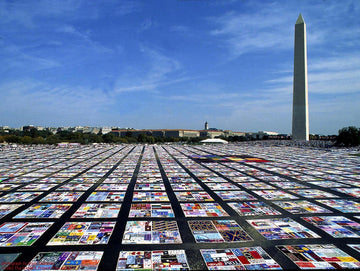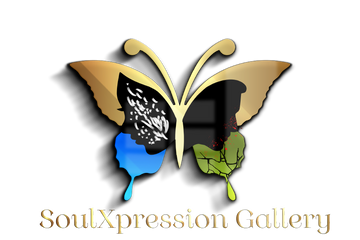The Soul Under Siege
True art emanates from the deepest recesses of an artist's being—a pure expression of inner truth, a manifestation of spirit made visible. When an artist creates from this authentic core, their work becomes a living testament to their unique perspective, carrying the unmistakable imprint of their soul. This connection between creator and creation is sacred, transformative, and fundamentally human.
Yet in today's world, numerous factors threaten to sever this vital connection between artist and authentic expression.
The Corrosive Power of Commercialization
When art becomes primarily a commodity, its spiritual essence begins to wither. Commercialization reduces creative expression to its market value, transforming soul-work into product development. Artists who once created to express truth find themselves creating to generate income, subtly altering their relationship with their own creative impulse.
The pressure to produce "sellable" work introduces calculations that are fundamentally foreign to authentic artistic expression. The artist begins to filter creative decisions through market considerations rather than spiritual necessity. Over time, this commercial lens becomes internalized, and the artist may no longer recognize when they're creating from external incentives rather than inner calling.
Commercialization also imposes artificial timelines on creative processes that naturally require time to gestate. The demand for regular production conflicts with the organic rhythms of genuine inspiration, forcing artists to manufacture creativity rather than channel it authentically.
The Tyranny of Trends
Trends in the art world can exert tremendous pressure on artists to conform. The artist who naturally expresses in one visual language may feel compelled to adopt currently fashionable styles, techniques, or themes to remain "relevant." This external pressure diverts artists from their authentic path and homogenizes creative expression across the cultural landscape.
Following trends rather than inner vision leads to derivative work that may be technically proficient but lacks the spiritual fingerprint that makes art transcendent. The artist becomes a follower, an imitator rather than a pioneer. Their unique perspective—the very thing that gives their art value—becomes diluted or entirely lost.
What's more insidious is how chasing trends can eventually reshape the artist's own aesthetic sensibilities, causing them to lose touch with their original voice. After years of trend-following, many artists can no longer distinguish between their authentic creative impulses and conditioned responses to market signals.
The Loss of Self and Authenticity
Perhaps the greatest tragedy in an artist's journey is the gradual estrangement from their authentic self. This erosion often happens incrementally—compromise by compromise, concession by concession—until the artist awakens to find themselves producing work they no longer recognize as their own.
Authenticity requires courage—the willingness to reveal oneself honestly through one's work, regardless of how it might be received. When artists begin prioritizing reception over authentic expression, they sacrifice their artistic integrity. The work may achieve external success while failing in its most fundamental purpose: truthful self-expression.
The artist who disconnects from their authentic voice loses not just their distinctiveness but the spiritual nourishment that genuine creation provides. Creation becomes depleting rather than regenerative, leading to creative burnout and spiritual alienation from one's own work.
The Addiction to External Validation
Social validation has become increasingly powerful in the digital age, where likes, shares, and comments provide immediate feedback. This constant evaluation creates a dopamine-driven cycle that can hijack the creative process, training artists to create for approval rather than expression.
The quest for validation redirects the artist's attention from inner truth to outer response. The pertinent question shifts from "Does this express my authentic vision?" to "Will this be well-received?" This external focus fundamentally alters the relationship between artist and art.
Paradoxically, work created primarily for validation often lacks the authentic power that generates genuine appreciation. Audiences can sense when work comes from calculated strategy rather than authentic expression, creating a vicious cycle where artists chase ever more validation through increasingly inauthentic work.
The Tyranny of Audience Expectations
When artists become overly conscious of their audience, they begin to create with invisible observers watching over their shoulders. This awareness introduces self-consciousness into what should be an unselfconscious process, inhibiting the free flow of authentic expression.
Different audiences develop expectations of particular artists, creating pressure to continue producing similar work. The artist may find themselves trapped in a particular style or theme, afraid to evolve naturally lest they disappoint their established followers. This constraint stunts the artist's natural growth and prevents the exploration that keeps work vibrant and alive.
The pressure to please an audience can lead artists to self-censor their most provocative or personal impulses—often the very elements that would make their work most powerful. Rather than creating work that challenges, transforms, or illuminates, the artist settles for work that merely satisfies.
The Distortion of Market Expectations
The market exerts tremendous pressure on artists to become brands—consistent, predictable, and easily categorizable. This pressure runs counter to the natural evolution of artistic expression, which thrives on exploration, risk-taking, and reinvention.
Market expectations often demand that artists specialize rather than diversify, narrowing their creative expression to a recognizable niche. This specialization may lead to technical refinement but often at the expense of the broader exploration that feeds the soul and keeps creativity fresh.
The market rewards consistency over growth, security over risk, and familiarity over innovation. These incentives discourage the very qualities that lead to groundbreaking work—qualities like vulnerability, experimentation, and the courage to fail publicly.
Reclaiming the Soul in Art
Art in its purest form emerges directly from the soul—unfiltered, uncalculated, and unbounded by external considerations. It is the artist's unique perspective crystallized into form, their innermost truth made tangible. When artists create from this authentic wellspring, their work transcends craft to become genuine communion between souls.
The artist's worldview, experiences, wounds, joys, and distinct perspective are precisely what make their contribution valuable. No one else can see through their eyes or express through their hands. This uniqueness isn't something to minimize for market appeal but the very essence that gives their work power.
When artists honor the connection between soul and expression, their work becomes more than object or performance; it becomes testimony.
The path back to authentic creation requires courage—the willingness to risk commercial failure for spiritual integrity. It demands that artists reconnect with their original motivations for creating, the impulses that existed before external pressures clouded their vision. It means creating from necessity rather than strategy, from vision rather than calculation.
In a world that increasingly treats art as content, product, or entertainment, the artist who maintains connection to their authentic voice performs an act of spiritual resistance. Their integrity preserves not just their individual expression but the very possibility of art as soul-work rather than mere commerce.
The true artist creates not because the market demands it, the audience expects it, or trends dictate it, but because their spirit requires it—a necessity as fundamental as breathing. Their art is not what they do but who they are, made visible through their chosen medium. In this authentic expression lies not just artistic integrity but the path to work that genuinely moves and transforms others.







tbJX TYF kJP